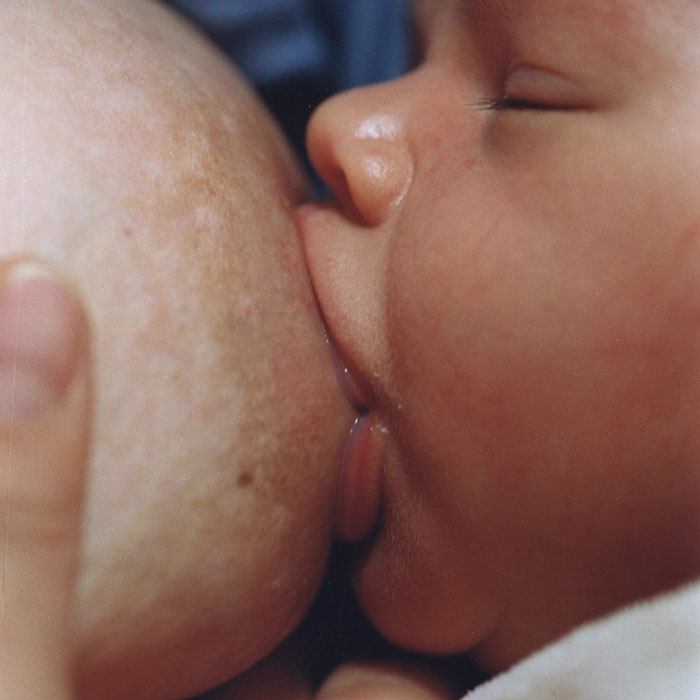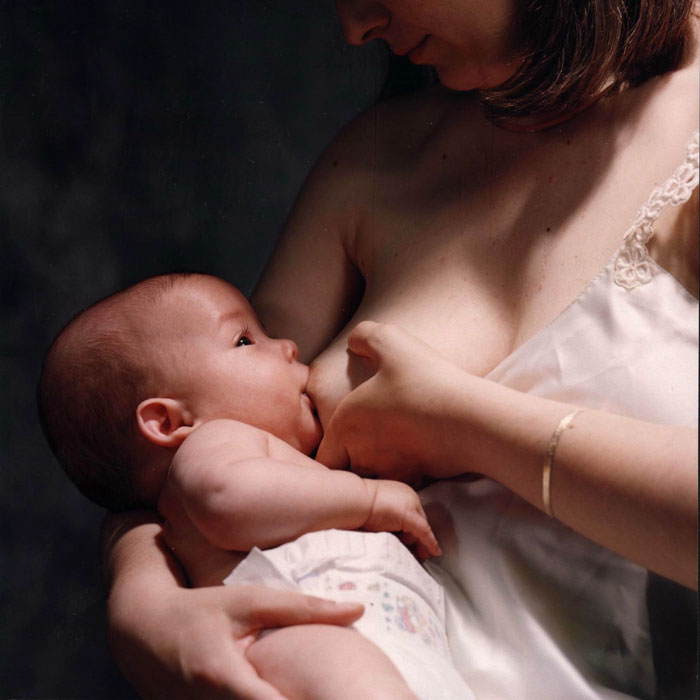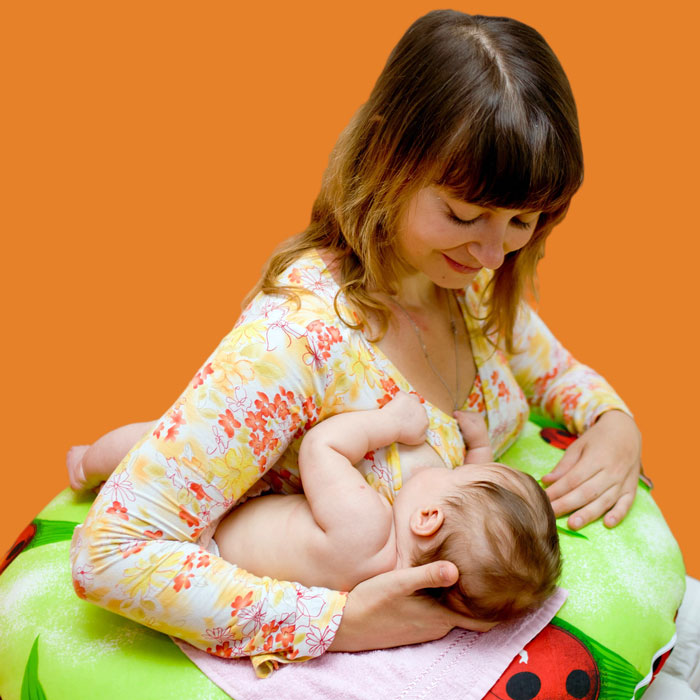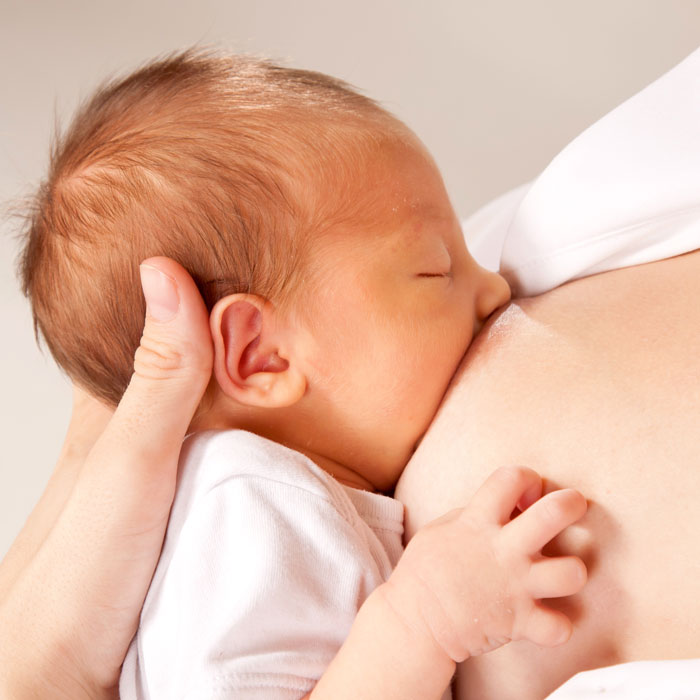There is no «right» way to breastfeed, the most important factor is that the mother is comfortable and that the baby is facing the mother, in close contact and latching well. A large portion of the areola should be inside the child´s mouth so that when the tongue moves it does not hurt the nipple.

Latching
Your baby is latching well and the position is correct when: the baby´s chin is touching your breast, mouth and lips or wide open (flanged out like a fish) and cheeks are full and rounded out when sucking. If the baby is latching well, there should be no pain during breastfeeding.
[+]info
Comité de Lactancia Materna
N. Marta Díaz-Gómez
Sitting Position or Cradle Hold
Cradle the baby with its head and body facing the mother (tummy to tummy). Hold the baby´s back with your hand while the head is supported by the crook of your arm and forearm, but not too near to the elbow joint to avoid neck movement. Using the other hand direct the breast gently towards the baby´s mouth as it opens.
Side lying position
Lie on your side and place the baby on his or her side facing you. When the baby opens his or her mouth gently touch your nipple to the baby´s lips using your hand on his or her back to help latch on. This position is comfortable during the night or during the first few days.
The laid back position or biological nurturing
The mother lies down face up (between 15 and 65 degrees) and the baby lies face down o top of the mother. This position allows the child to develop crawling and searching reflexes. The mother helps the baby reach the nipple using her arms to guide the child. This position is suitable for the first few days or when there may be a problem regarding latching on; like pain, cracks in the nipple or rejection or refusal to feed.
The rugby ball hold (inverted position)
The baby is tucked under the mother´s arm, legs and feet towards the back and the head close to the breast. It is important to support your baby´s shoulders and neck but not the head as the baby needs to stretch his or her neck backwards slightly for latching. This position is ideal for twins or premature babies.
The saddle hold
The baby sits on the mothers lap, tummy to tummy. This position is useful when there is nipple cracking or pain or when the child suffers gastroesophageal reflux, cleft lip or cleft palate, premature babies or babies with small jaws or hypotonia. In these cases it may be necessary to hold the breast from below and hold the child´s chin at the same time.
- Breastfeeding on demand. Babies must be allowed to feed whenever they want to. Allow the child to feed when he or she looks for the breast or starts sucking his or her fingers. Breastfeed before crying begins.
- In order to prevent engorgement, start feeding on the breast that was least used the last time or if the child only fed on one breast
- Let the baby empty the breast completely, the hindmilk -milk at the end of the feed- has a higher fat content (more calories).
- If the child is happy and does not appear to be ill, the baby is getting enough milk. If however, the baby does not urinate and wet nappies or diapers at least five times a day, or if there is a lack of bowel movement, it may be a sign of insufficient milk intake and you should consult your paediatritian.







